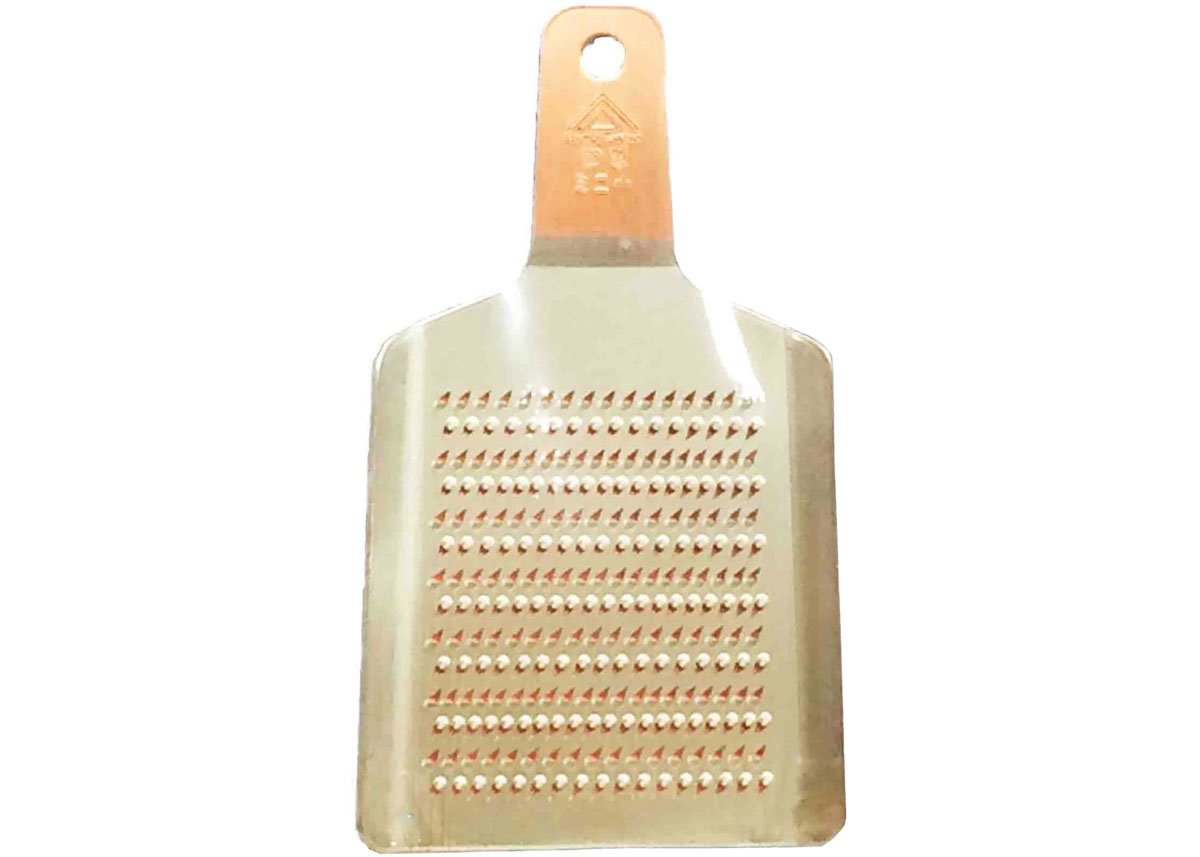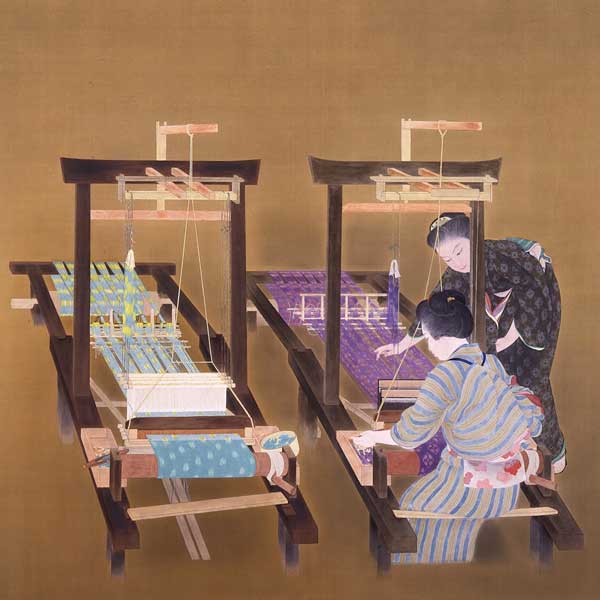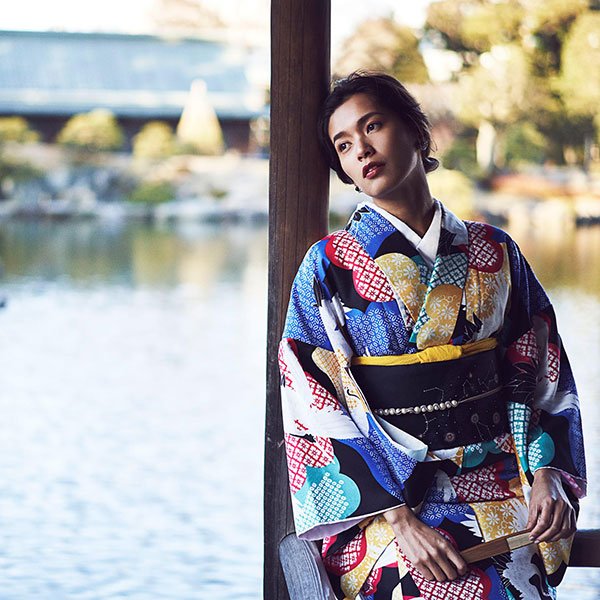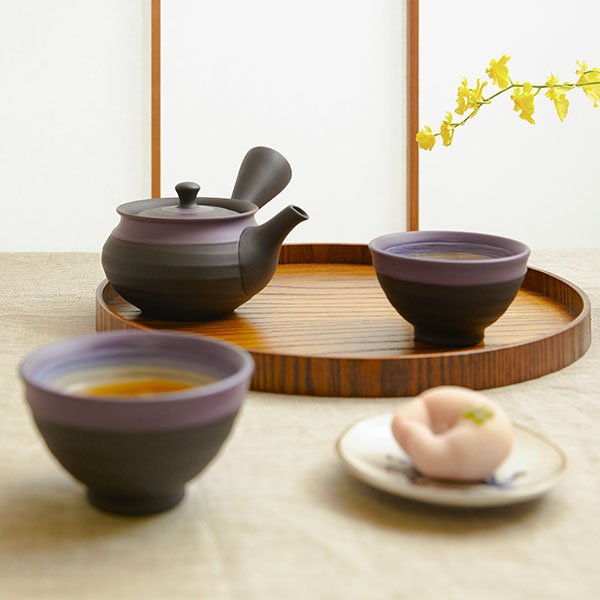15 Things to Know about the Traditional Japanese Kitchen
by Cath Lealand | LIFESTYLE
Painted Photograph of Japanese Kitchen by Adolfo Farsari, 1886
The modern Japanese kitchen is filled with gadgets and gizmos to make the chore of meal making a breeze. However, creating convenience in the kitchen is not just an idea of the 21st century. The traditional Japanese kitchen is filled with many interesting items and features, some of which you can still find in the kitchens of today.
Let’s take a look at 15 things you should know about the traditional Japanese kitchen, and find out how you can incorporate Japanese culinary arts into your home!
1. What is Kitchen in Japanese?
2. Cooking Low to the Ground
3. Bamboo as a Versatile Kitchen Tool
4. Discrete Entrance
5. Minimalist Japanese Kitchens
6. Tea Ceremony Kitchen
7. Pickling Japanese Food
8. Keeping Rice Fresh
9. Measuring Rice
10. Easy Cleaning
11. Kyoto Kitchens
12. Making Do and Mending
13. Japanese Knives
14. Kimono as a Fire Hazard
15. Japanese Kitchen in Your Home
Seikoji by Tosa Mitsunobu, 1490s
As with homes around the world, what we would now call the kitchen in Japan had simple beginnings. For centuries, the preparation of food was based around community-use wood burning stoves and natural water sources, such as rivers and natural wells. Even when food preparation moved away from community spaces to individual residences, kitchens were built separately from the main residence, for both fire safety and to keep the smell away from the other living areas.
Preparing the Morning Meal, 1893
As history and technology progressed, these cooking spaces combined fire (for cooking) and water (such as a well and drain) into a single place. In the Kamakura period, during the 12th and 13th century, the kitchen was gradually absorbed into the house for larger residences. Over the centuries, this style of interior kitchen spread down through the classes, and by the late 19th century, or Edo period a kitchen could be found in most Japanese residences.
The Kitchen by Kitagawa Utamaro, 1790
Ukiyoe woodblock prints feature scenes of kitchens, giving us a glimpse of the kitchens in the homes of various classes, from samurai families to the back tenement houses of the common people.
Modern Japanese kitchens tend to be very western in style, but if we take a look through the lens the traditional Japanese kitchen, there are still a number of features that remain!
1. What is Kitchen in Japanese?
The Kitchen of a Joraya by Hishikawa Moronobu, 1680, the Met Museum
In Modern Japan, there are two main words for kitchen. Whilst kicchin (キッチン) literally meaning kitchen, is probably the most likely word you will hear in modern Japan, daidokoro (台所), is still often used. Whilst the former makes people think of a western style kitchen, daidokoro has a much longer history, and brings to mind a more traditional Japanese kitchen. The original name for a Japanese kitchen comes from the stove itself.
In most historical Japanese kitchens, you’ll find a wood or charcoal-fueled stove, upon which a metal pot sits. Up until the Meiji period the kamado, the Japanese name for this type of stove, was how many referred to what we now call a kitchen.
Whilst kamado have been in little use since the late 20th century, there is still a way to have a similar gastronomical experience in modern-day Japan. Kamameshi, or rice cooked and served in an iron pot, is a common dish served as part of a course menu in Japanese inns. Whilst guests enjoy a variety of side dishes, the rice slowly cooks to fluffy perfection in the iron pot.
2. Cooking Low to the Ground
© Hu Totya / Creative Commons, Nihon Minka Open-Air Museum
The majority of traditional Japanese cooking was to be done in either a crouched or seiza position, so much like a lot of traditional Japanese furniture, the fixtures in the kitchen tended to be low to the ground. Often ingredients and dishes were prepared close to the kitchen floor, on flat or slightly raised wooden preparation boards. Whilst many houses had dirt floors in the kitchen areas, more often than not there would be an area with a wood floor, or ita-no-ma, where a lot of the preparation was done.
3. Bamboo as a Versatile Kitchen Tool
© Bamboo Basket by Wada Waichisai I
Making the most of the resources nature had to offer, the traditional Japanese kitchen applied bamboo to the food preparation process in a number of ways. Anyone who has attempted making their own sushi has probably come across a makisu, a flexible bamboo mat used for rolling makizushi. It is also used to shape other foods, such as rolled omelettes. Zaru, a colander-like tray in a circular shape, was also traditionally made from bamboo. Used for draining the water from ingredients, zaru are often used to serve Japanese noodles such as soba or udon. Bamboo still continues to be an integral part of the modern Japanese kitchen, with zaru and bamboo tools such as chopsticks still widely used today.
For those fascinated by bamboo art, check out 12 Best Japanese Bamboo Artists You Should Know!
4. Discrete Entrance
Kitchen of a Japanese house, 1890-1920
Many traditional Japanese kitchens had their own door, known as a katte-guchi or back door. Separate from the front door of a house, the katte-guchi served as a service entrance for deliveries or informal entrance for family members. Even throughout the 20th century, a katte-guchi was still a common feature of the Japanese household. However, as the lifestyles of many Japanese people changes, many are opting not to include katte-guchi in their new home builds.
5. Minimalist Japanese Kitchens
© 663highland / Creative Commons, Nakamura House
Besides the previously mentioned kamado, traditional Japanese kitchens were pretty sparse when it came to furniture. Built-in cupboards and drawers were almost totally absent. Instead, Japanese kitchen storage was limited to a large, wooden wardrobe-like piece of furniture called a mizudansu. Fitted with shelves and drawers, protected by sliding doors, kitchen and dining essentials such as bowls and plates would be kept in the mizudansu.
6. Tea Ceremony Kitchen
© John Weiss / Creative Commons, Kodai-ji
In many larger and grander residences, there was a room specifically used to entertain guests- the chashitsu, literally translated to ‘tea room’ (All You Need to Know About Chashitsu). Often connected to the tea room (or tea houses) would be a small kitchen-like space for preparing for the ceremony. Known as a mizuya, or ‘water room’, the space would include a water source and a traditional sink built into the floor. Whilst the space did not lend itself to ‘cooking’ like a regular kitchen, the mizuya was used to wash the tea ceremony utensils, as well as provide a space for the final arrangement of Japanese sweets.
7. Pickling Japanese Food
© Mimissu / Creative Commons, Tsukemono
Much like a lot of traditional cuisine around the world, keeping ingredients from spoiling was a constant battle. Pickling served as a great way of keeping perishables, particularly fruit and vegetables, lasting longer, whilst also providing unique flavours to a meal. Many Japanese pickles, or tsukemono, have changed very little over the years. Umeboshi (pickled plums) are one of the most well known Japanese pickles, but cucumbers, daikon, eggplant and ginger pickles still continue to be served up with Japanese meals. For tsukemono, which could involve pickling with salt, miso, rice bran or vinegar (among many other styles), there were special tools: tsukemo-noki, a pickling container, and tsukemono-ishi, a heavy stone or weight to apply pressure. Modern picking containers have eliminated the need for tsukemono-ishi, but the general pickling process still remains somewhat unchained.
8. Keeping Rice Fresh
© TANAKA Juuyoh / Creative Commons, Kamado
Pickling rice wasn’t really an option (in fact, the rice used in the pickling process of the ‘original’ sushi, narezushi, was not consumed), there was a way to keep rice fresher for longer. Ohitsu, a wooden tub with a lid, was used to not only keep rice warm after its preparation, but for keeping the cooked rice in an edible state. The wood of ohitsu, often cypress, serves two functions. First, the ohitsu absorbs the steam and moisture from the freshly cooked rice, preventing the rice from cooking and softening further inside the tub. Then, the ohitsu prevents the rice from drying out over time. Additionally, the rice gets a lovely flavor from the wood.
9. Measuring Rice
© katorisi / Creative Commons, Masu
When it came to preparing rice, a square wooden box was used for measurement, known as a masu. This would ensure that one could serve up the perfect serving of rice every time. Masu was also used to measure many items, including other grains and dry ingredients. Today, you are most likely to find them in a Japanese izakaya, with modern masu beling largely used for drinking Japanese sake.
10. Easy Cleaning
In the past, most Japanese meals in the past did not include meat, so cleaning up after dinner was somewhat easier. Ash was commonly used as a detergent, and in the Edo period (1603-1868), kitchen work was done by washing foodstuffs and dishes at the edge of a well or by the riverside, and bringing them back to the wooden sink in the house. For more stubborn food remains, a tawashi, a scrubbing brush made from hemp palm, was used. Whilst the natural water sources of a river or well were eventually replaced with modern water systems, there still exists an example of a modern-day Japanese city still making use of the old river cleaning system.
11. Kitchens in Kyoto
Kyoto Kitchen, 1936
Whilst most traditional Japanese dwellings housed the kitchen at the back of the house, the terraced styled machiya townhouses in Kyoto and Osaka had a different floor plan. The kitchen was part of the tooriniwa, a passageway that ran from the street or ‘main’ entrance to the back entrance. Tooriniwa had the appearance of a courtyard, often with dirt floors. However, it was fully enclosed and was the location for most machiya kitchens. Above the tooriniwa sat a chimney, which funneled smoke and smells up and away from the neighbouring living areas.
12. Making Do and Mending
Kintsugi Tea Bowl
Items in the traditional Japanese kitchen were made to be repaired, rather than replaced. With materials such as pottery, iron and wood, there were a number of ways to fix and extend the life of kitchen tools. Kintsugi was a way to breathe life back into the chipped, cracked and smashed pottery and ceramics. Whilst many metal objects, such as knives or oroshigane graters, could be bent, sharpened or beaten back into a usable state.
Take a look at our article on the Japanese concept of mottainai, to learn more about this historical and eco-friendly philosophy.
13. Japanese Knives
© Tottori Prefectural Government, Otsuka Yoshifumi Knives
As you can see in our article on How to Select the Best Japanese Knives, the traditional Japanese kitchen featured a number of different knives, each serving their own specific purpose. Smaller kitchens may only have had one knife, the versatile gyuto knife, but larger residences would have had a number of different knives to effectively cut and prepare specific ingredients.
14. Kimono as a Fire Hazard
© University of Massachusetts Amherst, Japanese Waitress, 1896
Even when preparing a meal, those cooking would be most likely seen wearing a kimono. In a kitchen powered by a fire or charcoal stove, surely the billowing sleeves proved a problem? That’s where tasuki comes in handy! A cord or long piece of fabric, tasuki are tied over the shoulders and back to pull up sleeves so that they do not get in the way.
15. Japanese Kitchen in Your Home
Want to bring some aspects of a traditional Japanese kitchen into your own home?
Whilst many features of a traditional Japanese kitchen might not fit so well into the homes of the 21st century (looking at you, kamado), there are many items that you can still purchase and use for yourself to bring a bit of Japanese culinary history to your kitchen.
Donnabe are earthenware clay cooking pots, often used for hot pots (and can even be used to make delicious steaming rice).
Bringing the power of bamboo into your kitchen is easy with a bamboo zaru colander. Use it for draining water from ingredients, or to serve up some tasty zaru soba.
If you want to serve your freshly steamed rice in the traditional way, this ohitsu would fit the bill perfectly.
Take on the Japanese idea of mottainai by using (and repairing the old fashioned way) this oroshigane copper grater for small vegetables.
And for those who take their rice very seriously, siroca has created an electric rice cooker that seeks to replicate the traditional kamado style of rice preparation.
Kamado Rice Cooker – Available at Amazon
For those who are looking for more up-to-date Japanese kitchen items (many of which have their roots in the kitchens of the past), check out are article on the 30 Most Useful Japanese Kitchenware You Can Buy Online.
JO SELECTS offers helpful suggestions, and genuine recommendations for high-quality, authentic Japanese art & design. We know how difficult it is to search for Japanese artists, artisans and designers on the vast internet, so we came up with this lifestyle guide to highlight the most inspiring Japanese artworks, designs and products for your everyday needs.
All product suggestions are independently selected and individually reviewed. We try our best to update information, but all prices and availability are subject to change. As an Amazon Associate, Japan Objects earns from qualifying purchases.


















LIFESTYLE | July 28, 2023